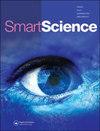NOVEL SARS-CoV-2 INHIBITORS FROM PHENETHYLTHIAZOLETHIOUREA DERIVATIVES USING HYBRID QSAR MODELS AND DOCKING SIMULATION
IF 1.4
Q2 MULTIDISCIPLINARY SCIENCES
引用次数: 2
Abstract
ABSTRACT Currently, there are several groups of HIV-1 virus inhibitors that could potentially be used in the treatment of SARS-CoV-2. Particularly, the phenethylthiazolethiourea compounds are capable of inhibiting HIV-1 RT and have been tested by IC50. This work contributed to the search for SARS-CoV-2 inhibitors; a group of these compounds was developed to obtain SARS-CoV-2 inhibitors. The hybrid QSARGA-ANN model with I(5)-HL(9)-O(1) architecture used for developing for HIV-1 inhibitors and it successfully predicted the pIC50 activities of six newly designed compounds. The predicted results of the pIC50 activity received from the QSARGA-ANN model agreed well with the docking simulation. The C-n6 new molecule that has been bound to the SARS-CoV-2 protein receptors (PDB ID: 6LU7) using docking simulation. It demonstrated a more effective activity against HIV-1 (PDB ID: 1ODW). This compound C-n6 exhibited the binding affinity for the HIV-1 protein (1ODW) is −23.6137 kJ.mol-1; for the target protein SARS-CoV-2 (6LU7), its binding affinity is −27.4235 kJ.mol-1. The retrosynthesis plan for the most active substance C-n6 1-(2-chloro-5-hydroxy-4-nitrophenethyl)-3- (thiazol-2-yl) thiourea has been successfully constructed. In this research the designed directions for new substances can generate the SARS-CoV-2 inhibitory drugs in a fast and reliable way. GRAPHICAL ABSTRACT基于混合QSAR模型和对接模拟的苯乙基噻唑硫脲衍生物的新型SARS-CoV-2抑制剂
目前,有几组HIV-1病毒抑制剂可能用于治疗SARS-CoV-2。特别是,苯乙基噻唑硫脲化合物能够抑制HIV-1 RT,并已通过IC50测试。这项工作有助于寻找SARS-CoV-2抑制剂;开发了一组这些化合物以获得SARS-CoV-2抑制剂。该混合QSARGA-ANN模型具有I(5)-HL(9)-O(1)结构,用于开发HIV-1抑制剂,并成功预测了六种新设计化合物的pIC50活性。QSARGA-ANN模型对pIC50活性的预测结果与对接模拟结果吻合较好。通过对接模拟,与SARS-CoV-2蛋白受体(PDB ID: 6LU7)结合的C-n6新分子。它对HIV-1 (PDB ID: 1ODW)具有更有效的活性。该化合物C-n6对HIV-1蛋白的结合亲和力(1ODW)为−23.6137 kJ.mol-1;靶蛋白SARS-CoV-2 (6LU7)的结合亲和力为−27.4235 kJ.mol-1。成功地构建了最活性物质C-n6 1-(2-氯-5-羟基-4-硝基苯基)-3-(噻唑-2-基)硫脲的反合成方案。本研究设计的新物质方向可以快速、可靠地生成抑制SARS-CoV-2的药物。图形抽象
本文章由计算机程序翻译,如有差异,请以英文原文为准。
求助全文
约1分钟内获得全文
求助全文
来源期刊

Smart Science
Engineering-Engineering (all)
CiteScore
4.70
自引率
4.30%
发文量
21
期刊介绍:
Smart Science (ISSN 2308-0477) is an international, peer-reviewed journal that publishes significant original scientific researches, and reviews and analyses of current research and science policy. We welcome submissions of high quality papers from all fields of science and from any source. Articles of an interdisciplinary nature are particularly welcomed. Smart Science aims to be among the top multidisciplinary journals covering a broad spectrum of smart topics in the fields of materials science, chemistry, physics, engineering, medicine, and biology. Smart Science is currently focusing on the topics of Smart Manufacturing (CPS, IoT and AI) for Industry 4.0, Smart Energy and Smart Chemistry and Materials. Other specific research areas covered by the journal include, but are not limited to: 1. Smart Science in the Future 2. Smart Manufacturing: -Cyber-Physical System (CPS) -Internet of Things (IoT) and Internet of Brain (IoB) -Artificial Intelligence -Smart Computing -Smart Design/Machine -Smart Sensing -Smart Information and Networks 3. Smart Energy and Thermal/Fluidic Science 4. Smart Chemistry and Materials
 求助内容:
求助内容: 应助结果提醒方式:
应助结果提醒方式:


